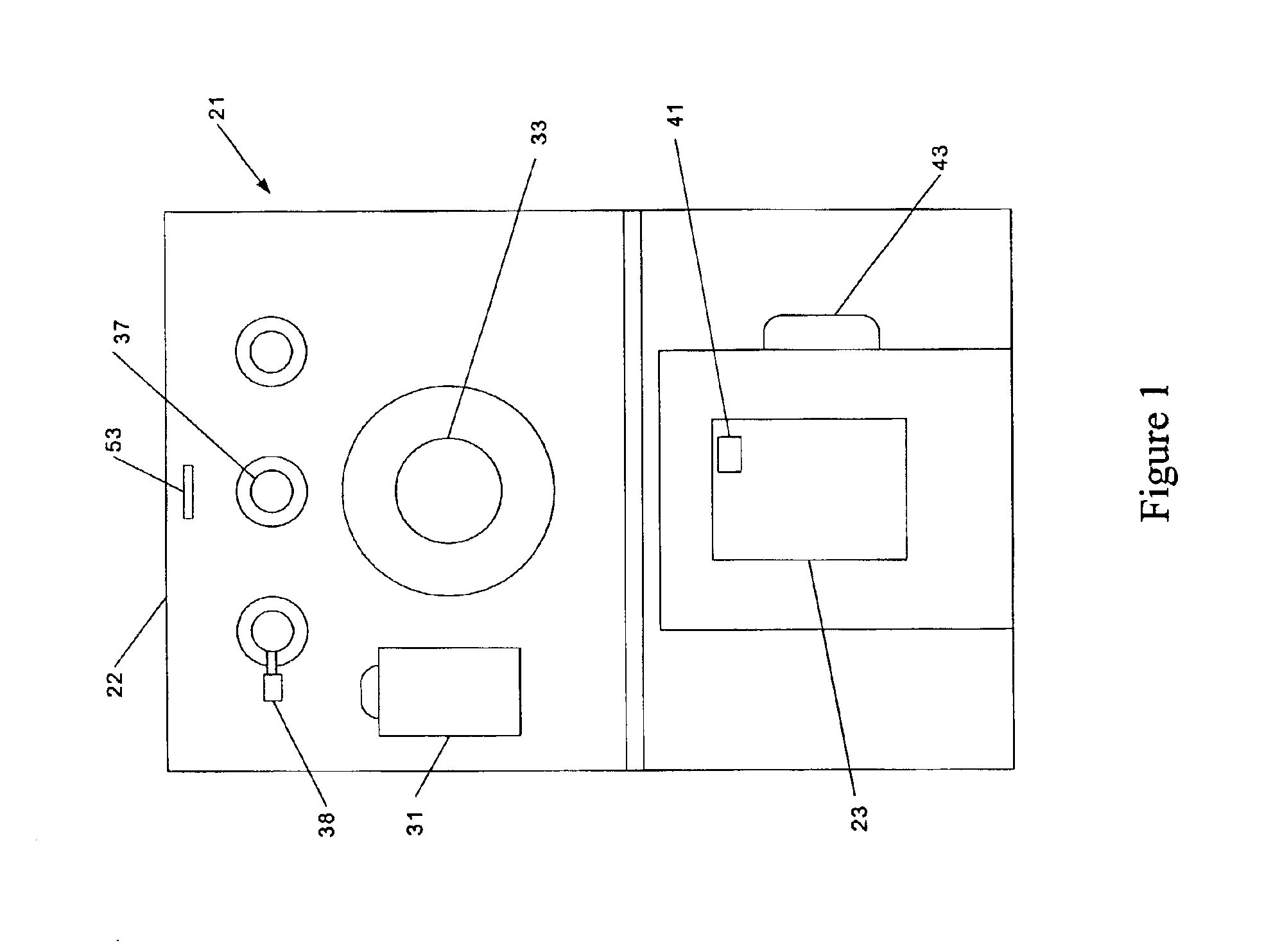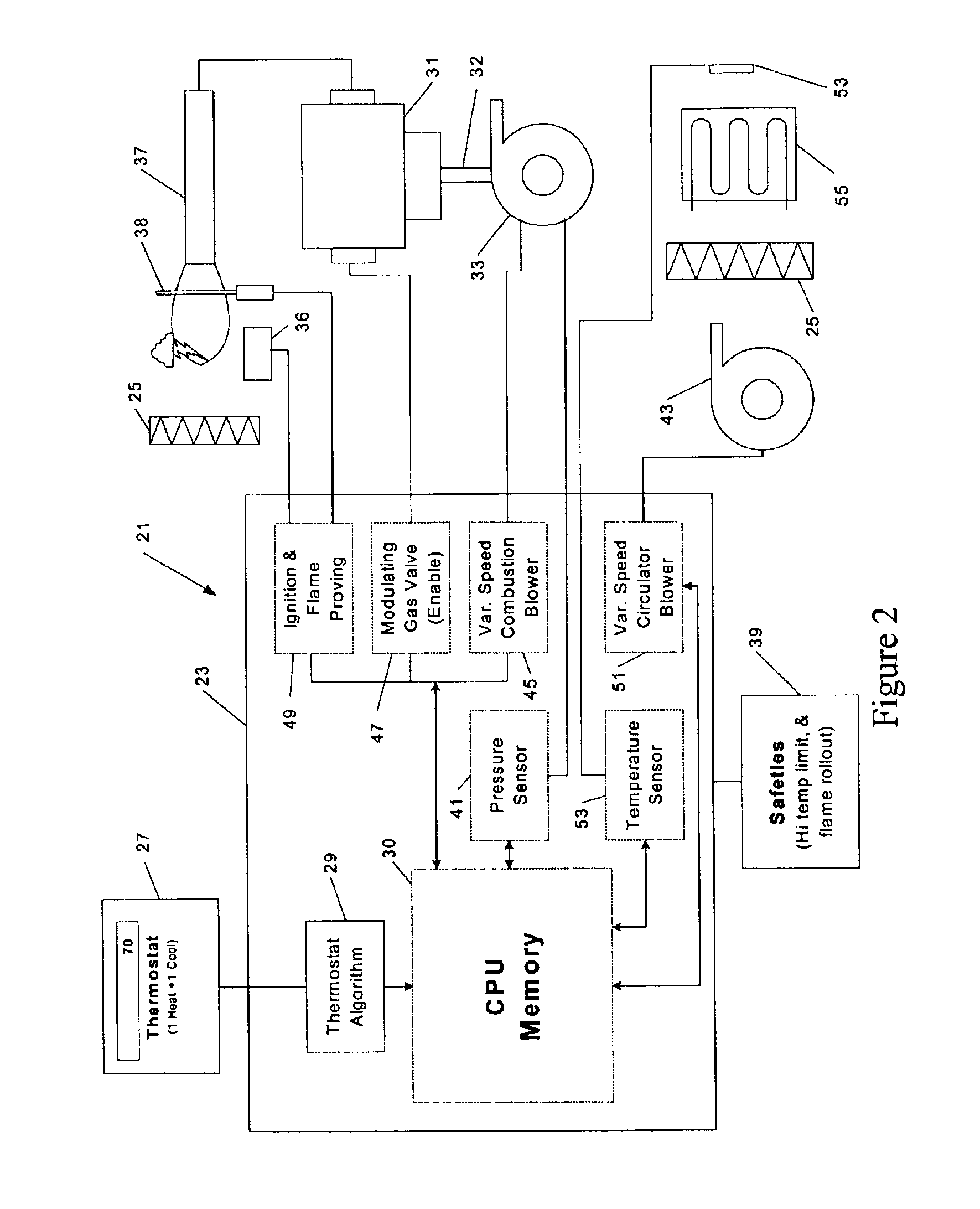Variable output heating and cooling control
a variable output and control technology, applied in the direction of fluid heaters, combustion control, lighting and heating apparatus, etc., can solve the problems of significant reduction in appliance efficiency, health and safety hazards, and excessive pollutant production
- Summary
- Abstract
- Description
- Claims
- Application Information
AI Technical Summary
Benefits of technology
Problems solved by technology
Method used
Image
Examples
Embodiment Construction
Referencing FIGS. 1, 2 and 3, a heating or HVAC system 21 such as a furnace and circulation system, is shown as the exemplary embodiment of various aspects of an appliance according to the invention. FIG. 1 shows a pictographic representation of the key components of a variable, or modulating, furnace 22. FIG. 2 schematically illustrates a controller 23 in conjunction with the modulating furnace key components. Major components of the heating system 21 include a controller 23 and a heat exchanger portion 25, as will be understood by those persons having ordinary skill in the art. The controller 23 may receive, a call for operation of the appliance, in this case to produce heat, from a sensing element, such as a simple On / Off thermostat 27. A thermostat algorithm 29 residing in the controller 23 may then determine the firing rate required of the variable, or modulating, fuel valve 31 or the airflow required from the motor of the variable speed combustion blower 33, or both, in order ...
PUM
 Login to View More
Login to View More Abstract
Description
Claims
Application Information
 Login to View More
Login to View More - R&D
- Intellectual Property
- Life Sciences
- Materials
- Tech Scout
- Unparalleled Data Quality
- Higher Quality Content
- 60% Fewer Hallucinations
Browse by: Latest US Patents, China's latest patents, Technical Efficacy Thesaurus, Application Domain, Technology Topic, Popular Technical Reports.
© 2025 PatSnap. All rights reserved.Legal|Privacy policy|Modern Slavery Act Transparency Statement|Sitemap|About US| Contact US: help@patsnap.com



